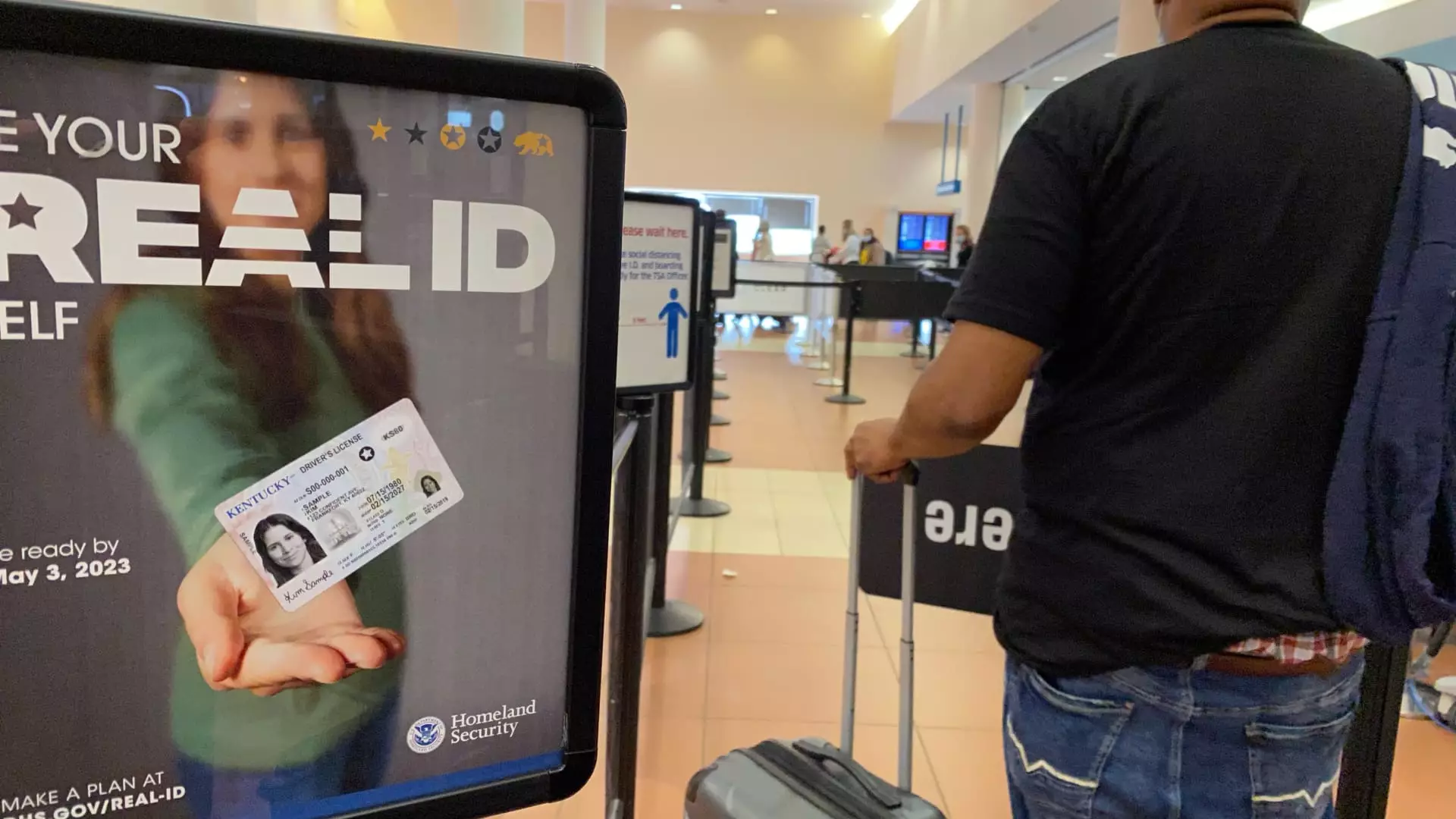As summer approaches, an undercurrent of anxiety is surfacing in airports across the United States. With the federal government reigniting talks of enforcing Real ID requirements starting May 7, travelers are urged to act swiftly to avoid potential chaos at security checkpoints. For those unaware, a Real ID-compliant identification, such as a driver’s license or state-issued ID, is no longer just a suggestion; it’s an essential gateway to board domestic flights. The Transportation Security Administration (TSA) has confirmed that a staggering 81% of travelers currently possess compliant IDs, although this statistic varies significantly across different states.
What stands out here is the troubling revelation that a significant chunk of the population still lacks these necessary credentials. It raises a critical question: Why has this been such a slow-moving train wreck? The repeated delays and the lack of urgency shown over the years suggest an alarming level of complacency, and with just a few days left before the deadline, people are scrambling. Appointments at motor vehicle departments for ID updates are becoming scarce, highlighting the logistical nightmare that awaits many anxious travelers.
Pushy Reminders or Genuine Advice?
While officials have been promoting the impending requirement through various channels, including flyers and social media promotions, it feels disingenuous. Why should it have taken the looming deadline for authorities to ramp up communication? Flyers given out by TSA officers and reminders from airlines are certainly helpful, but they are also a testament to years of underwhelming communication about something so crucial. The situation is reminiscent of a fire drill, only this time the fire has already broken out, and people are just now being told to gather their belongings and evacuate.
John Essig, the TSA’s federal security director for New York City-area airports, made a passionate plea: “Make your appointments now as quick as possible.” But why did we reach this late stage? People’s lives are busy, and leaving such essential matters until the last minute is both frustrating and avoidable. This feels more like a systemic failure than just a personal one, and it reflects poorly on government efficiency.
Real ID: A Necessary Evil?
Some may argue that realizing this requirement post-September 11, 2001, was a logical step in enhancing national security. After witnessing the tragic consequences of the attacks, the introduction of a standardized ID seemed warranted. However, the implementation of the Real ID Act has been fraught with delays and complications. One can’t help but wonder if a meticulously organized approach could have alleviated much of the chaos we’re witnessing today. The gold or black star—the hallmark of a compliant ID—has become a significant symbol in our post-9/11 society, signifying both compliance and bureaucratic overreach in one fell swoop.
The sheer idea that local governments were given the task of aligning with federal standards appears to breed inconsistency, especially when standards are vague and the implications for travelers aren’t always clear. It’s a mixed message: while catching criminals and enhancing airport security are noble aims, the execution is sending many individuals into turmoil just to catch a flight.
The Backup Options: A Double-Edged Sword
For those who feel backed into a corner by the approaching deadline, the TSA has proposed backup options, including using a U.S. passport or a permanent resident card, which is heartening yet frustrating. It feels as though the narrative of ‘getting it right’ has become convoluted, and alternatives have now created more confusion among the populace. The ease of travel should never hinge upon the bureaucratic whims of government mandates, leaving families, business professionals, and students in the lurch.
In a rather ironic twist, the TSA has urged travelers to arrive at least three hours early for domestic flights if they lack the Real ID. It’s not just a matter of showing up early; it becomes a matter of survival in a bureaucratic minefield. What began as a simple act of boarding a flight has now morphed into a stressful ordeal for the everyday traveler. Meanwhile, skeptics might question if these measures genuinely enhance security or merely serve as another layer in a complex, ineffective security protocol.
In an age where travel should embody freedom and spontaneity, the requirement of Real ID compliance looms large, casting a shadow over America’s travel experience. The impending enforcement underscores the importance of proactive measures, not last-minute scrambling. It’s evident that no one—government officials or civilians—wants to miss out on the joys of travel due to bureaucratic constraints, so why are we still grappling with this after all this time?


Leave a Reply